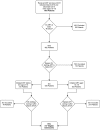Greater retention in care among adolescents on antiretroviral treatment accessing "Teen Club" an adolescent-centred differentiated care model compared with standard of care: a nested case-control study at a tertiary referral hospital in Malawi
- PMID: 29178197
- PMCID: PMC5810310
- DOI: 10.1002/jia2.25028
Greater retention in care among adolescents on antiretroviral treatment accessing "Teen Club" an adolescent-centred differentiated care model compared with standard of care: a nested case-control study at a tertiary referral hospital in Malawi
Abstract
Introduction: There are numerous barriers to the care and support of adolescents living with HIV (ALHIV) that makes this population particularly vulnerable to attrition from care, poor adherence and virological failure. In 2010, a Teen Club was established in Zomba Central Hospital (ZCH), Malawi, a tertiary referral HIV clinic. Teen Club provides ALHIV on antiretroviral treatment (ART) with dedicated clinic time, sexual and reproductive health education, peer mentorship, ART refill and support for positive living and treatment adherence. The purpose of this study was to evaluate whether attending Teen Club improves retention in ART care.
Methods: We conducted a nested case-control study with stratified selection, using programmatic data from 2004 to 2015. Cases (ALHIV not retained in care) and controls (ALHIV retained in care) were matched by ART initiation age group. Patient records were reviewed retrospectively and subjects were followed starting in March 2010, the month in which Teen Club was opened. Follow-up ended at the time patients were no longer considered retained in care or on 31 December 2015. Cases and controls were drawn from a study population of 617 ALHIV. Of those, 302 (48.9%) participated in at least two Teen Club sessions. From the study population, 135 (non-retained) cases and 405 (retained) controls were selected.
Results: In multivariable analyses, Teen Club exposure, age at the time of selection and year of ART initiation were independently associated with attrition. ALHIV with no Teen Club exposure were less likely to be retained than those with Teen Club exposure (adjusted odds ratio (aOR) 0.27; 95% CI 0.16, 0.45) when adjusted for sex, ART initiation age, current age, reason for ART initiation and year of ART initiation. ALHIV in the age group 15 to 19 were more likely to have attrition from care than ALHIV in the age group 10 to 14 years of age (aOR 2.14; 95% CI 1.12, 4.11).
Conclusions: This study contributes to the limited evidence evaluating the effectiveness of service delivery interventions to support ALHIV within healthcare settings. Prospective evaluation of the Teen Club package with higher methodological quality is required for programmes and governments in low- and middle-income settings to prioritize interventions for ALHIV and determine their cost-effectiveness.
Keywords: HIV care continuum; adolescents; differentiated care; retention.
© 2017 The Authors. Journal of the International AIDS Society published by John Wiley & sons Ltd on behalf of the International AIDS Society.
References
-
- UNAIDS . The Joint United Nations Programme on HIV/AIDS. All In to #EndAdolescentAIDS. 2015. Available from: http://www.unaids.org/sites/default/files/media_asset/20150217_ALL_IN_br...
-
- Idele P, Gillespie A, Porth T, Suzuki C, Mahy M, Kasedde S, et al. Epidemiology of HIV and AIDS among adolescents: current status, inequities, and data gaps. J Acquir Immune Defic Syndr. 2014;66:S144–53. - PubMed
MeSH terms
Substances
Grants and funding
LinkOut - more resources
Full Text Sources
Other Literature Sources
Medical


